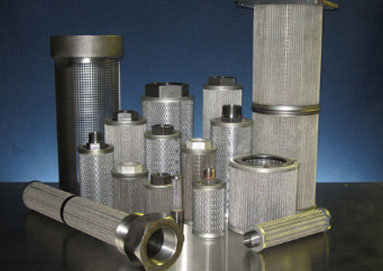Oil Suction Filter and How It Works

There are two types of oil suction filters: Cartridge filters and Spin-on filters. Both types have benefits and drawbacks, so you’ll need to decide which is best for your needs.
Cartridge Style Filter
This type of filter has a cylindrical housing with a replaceable filter element inside covered with a mesh screen that traps contaminants as the oil passes through it.
Spin-on Filter
This type of filter contains a canister that spins around, which helps to remove contaminants from the oil. It’s less likely to become clogged than a cartridge filter, but it can be more challenging to replace.
Difference between using an oil suction filter and a strainer in hydraulic systems
Filters and strainers are both critical in the operation of a hydraulic system. Both are designed to remove contaminants, but they do so in different ways.
- Suction filters are typically located at the beginning of the hydraulic circuit, before the pump. Their purpose is to remove any small particles or debris that may be present in the oil, which could potentially damage the pump or other components further down the line.
- Strainers, on the other hand, are usually located after the pump (between the pump and reservoir), and their job is to remove any larger contaminants that may have made it past the suction filter.
While suction filters and strainers serve an essential purpose, they are not interchangeable. Each has a specific function to perform to keep your hydraulic system running smoothly.
Using the wrong device (or failing to use either) can seriously damage your equipment, so be aware of the difference and ensure you’re using the suitable machine for the job.
Benefits of using an oil suction filter
- An oil suction filter helps keep the oil clean and prevents it from entering the system, where it could cause damage.
- The filter is typically located in the oil reservoir, and it works by trapping contaminants in its filter media.
- This helps keep the oil clean and prevents it from entering the system, where it could cause damage.
- They are relatively easy to use and maintain.
- They can help improve machinery’s efficiency by ensuring the oil is correctly filtered and can flow more freely.
How to choose the right oil suction filter for your needs
When selecting an oil suction filter, you must consider the pollutants in your hydraulic system. If your oil contains several particles, you will require a filter capable of capturing them. A strainer may be a better solution if there is a great deal of dirt or metal shavings in the system.
Additionally, you must evaluate the flow rate of your system. The greater the flow rate, the greater the filter’s efficiency requirements. You must also check that the filter can withstand your system’s maximum pressure and temperature.
Finally, you must choose the filter housing you desire. Spin-on filters are less costly and easier to replace than cartridge filters. Spin-on filters are less prone to become blocked, but replacing them might be more challenging.
We provide quality products and services that are reliable, efficient, and affordable
DOMS Incorporated has many options for hydraulic filters and strainers. Our products come in a wide range of sizes and quality levels to fulfill your needs and facilitate the proper operation of your hydraulic system.
We also offer a range of custom options to ensure you get the perfect product for your application. Whether you need a replacement for an existing filter or strainer or you are looking for a new one to install in your system, we can help.
Contact us today to learn more about our products and how we can help you keep your hydraulic system function at its best.



